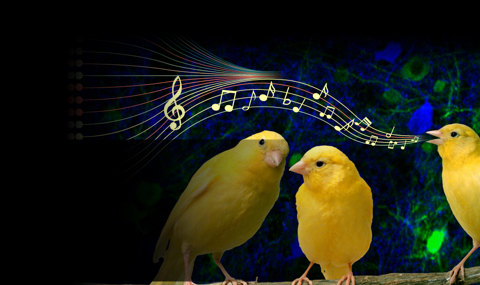What happens in the brain when a new skill is learned? Or, when an old skill is reshaped?
These questions have been heavily investigated looking at ongoing motion or at transition between consecutive gestures. But, in many skills, with speech being the richest example, the function of an ongoing action is determined by the context of multiple behavioral time scales and elements far removed in a sequence of gestures - creating long-range dependencies called syntax rules.
Existing theories of context dependent conditioning limit, in their biophysical implementation, the association of coexisting neural representations of context, reinforcing stimulus, and behavior. Such limitations may determine which syntax rules can be learned and in what order – a key feature of theories like universal grammar that suggest learners of different languages conform to similar development processes.
Working with canaries we have a unique opportunity to put these theories to the test - and discover new ones. Our previous work revealed neural activity in the canary song circuit supporting syntax rules by encoding long-range song history contexts during ongoing singing.
We combine tracking neural activity over time scales in which experience shapes behavior with theory and simulation of neural plasticity to ask which network architectures and which plasticity mechanisms underlie the acquisition of new long-range syntax rules and the reshaping of existing ones? Mostly, we are interested in the limits that a network architecture and its plasticity impose on the learning of new compositional behavior rules.


